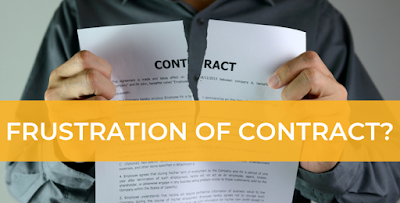Perhaps the first case
any law student taking the company law module will ever be introduced to is
that of Salamon v Salamon & Co Ltd
(1897). Salamon represented a
unanimous decision to uphold the doctrine of corporate personality. What is the
corporate personality doctrine? The doctrine established that an incorporated
company has a distinct identity from its shareholders (members) and, therefore,
must be dealt with and sued in its own name.
Before the
anti-capitalists uproar at the idea of a distinct corporate personality, its
merits should be explored. For many years to date, the doctrine has facilitated
the expansion of business activity by allowing those with little or limited
capital, or those lacking an unlimited appetite for risk, the comfort to invest
in an incorporated company in the knowledge that should the company fall
insolvent or obtain some legal liability against itself it will not be possible
for the shareholder to be pursued. Thus, the corporate personality doctrine
allowed members of the public to form companies and invest in existing companies
in the comfort of the knowledge that they only risk their initial investment
and their personal assets will be out of the reach of the company’s creditors.
However, our
anti-capitalist friends are not without a point. The doctrine of the corporate personality
has not been immune from abuse and for this reason, the courts have taken to
the practice of “lifting the corporate veil” in limited circumstances, such as
in those situations where it can be argued that the company was created as a
mere sham or façade. Salamon was
referred to as calamitous by Otto Kahn-Freund, who also called for the
abolition of all private companies (see Kahn-Freund, O. “Some Reflections on
Company Law Reform”, (1944) 7(1/2) M.L.R. 54, 54). From a technical
perspective, concerns in relation to a distinct corporate personality and the
limited liability doctrine can be understood: It is all too easy to incorporate
company (with distinct corporate personality) and enjoy the benefits of limited
liability whilst trying to defraud the company’s creditors from assets that are
in the name of the members. And, in light of such concerns, a saga of cases emerged
over the decades that followed Salamon
which held that the corporate veil could be lifted/pierced and the shareholders
of the company could be pursued.
In its most recent
case, the Supreme Court has been given the opportunity to adjust the goalposts
in relation the ambit of the judicial ability to lift the corporate veil. In VTB Capital plc v Nutritek International
Corp and others [2013] UKSC 5 (hereinafter “VTB”) the Supreme Court was asked to consider whether the
contractual obligations of the company could be attributed to the shareholders
by piercing the corporate veil. In this case, VTB is a PLC registered UK
bank and is owned by a Russian Bank. VTB agreed to lend a significant sum of
money ($225 million) to a Russian company, Russagroprom LLC, in order to
facilitate the purchase of six Russian dairy companies. The owner of Russagroprom
was found to be a Russian resident who had conducted the initial negotiations
with VTB. Russagroprom defaulted and moneys remained outstanding to VTB. VTB
then attempted to sue all holding companies and the Russian resident who owed Russagroprom,
a Mr Malofeev, for attempting to defraud VTB with a false representation holding
there were no links between Russagroprom and the companies it wished to
purchase.
Lord Neuberger, in the
Supreme Court, provided the leading judgement on the matter. The Court was
asked to state that there should be no remit for the courts to lift the veil
and counsel for the defendants provided a “sustained attack” on the lifting of
the veil. Whilst agreeing that the case law on the matter was obscure, Lord
Neuberger could not bring himself to find that there were no instances beyond
statute where courts could lift the veil. However VTB’s claim failed as his
Lordship held that it could not be held that a controller or member of a
company could be said to have become a party to the contract as the controller’s
identity was wholly separate from the corporation.
The case is significant
in that it provides another limitation to the lifting of the veil whereby the
courts have maintained the rule in Salamon
and have done so even against allegation of impropriety and fraud. Lord
Neuberger, whilst not agreeing with the respondent counsel that the court could
not lift the veil in the absence of a statutory provision, has limited the
ambit of the court to do so in relation to contracts completed with the
company.
Jay Gajjar
This blog is intended for reference only. The author
and London Law Tutor Ltd. cannot guarantee its accuracy and accept no liability
for the consequences following from its use.
Law Tutors Online, UK Law Tutor, UK Law Notes, Manchester Law Tutor, Birmingham Law Tutor, Nottingham Law Tutor, Oxford Law Tutor, Cambridge Law Tutor, New York Law Tutor, Sydney Law Tutor, Singapore Law Tutor, Hong Kong Law Tutor, London Tutors, Top Tutors Online and London Law Tutor are trading names of London Law Tutor Ltd. which is a company registered in England and Wales. Company Registration Number: 08253481. VAT Registration Number: 160291824 Registered Data Controller: ZA236376 Registered office: Berkeley Square House, Berkeley Square, London, UK W1J 6BD. All Rights Reserved. Copyright © 2012-2024.


